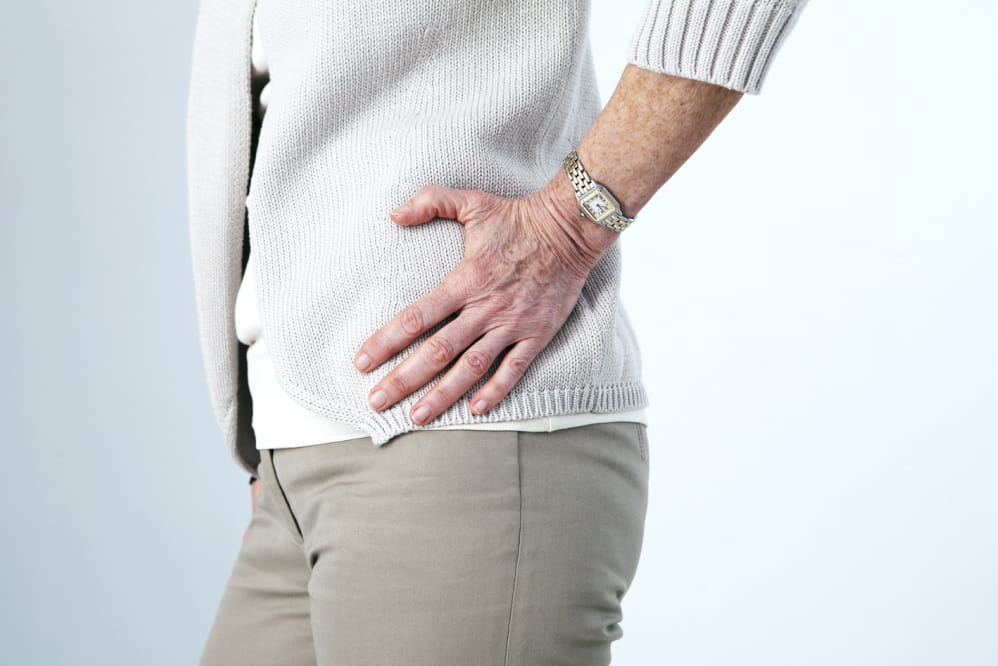
Hip bursitis – Causes, symptoms, and management
Bursitis refers to pain in the fluid-filled, tiny sac known as a bursa. Bursae cushion the spaces surrounding the bones and the other tissues. Hip bursitis is a painful swelling around the hip joint, where the femur or the thigh bone connects to the pelvis. The femur’s pointed exterior is called the greater trochanter. In case of hip bursitis, the bursa covering the greater trochanter is irritated, inflamed, or damaged.
Causes and risk factors
While anyone can get hip bursitis, it is more prevalent in elderly or middle-aged people, especially women compared to men and younger people. Below is a list of some common causes and risk factors of hip bursitis.
- Hip injury
One can get a hip injury when they bump their hip, fall onto the hip, or lie on one side of the body for a prolonged duration. - Rheumatoid arthritis
This condition can make the bursa susceptible to inflammation - Repetitive strain
This can occur when stair climbing, running, standing, or bicycling for long - Spine disease
This involves lumbar spine arthritis, scoliosis, and other spine issues that impact how one walks - Previous surgery
Any previous surgery around the prosthetic implants in the hip or the nearby region can inflame the bursa and lead to bursitis - Leg-length inequality
When a person’s one leg is dramatically shorter than the other, it influences how one walks and may result in hip bursa irritation - Calcium deposits or bone spurs
Calcium deposits may develop within the tendons that annex the muscles to the trochanter. They irritate the bursa and lead to inflammation.
Symptoms
Hip bursitis symptoms include joint tenderness and pain. One may also notice a warm feeling or swelling around the infected area. The pain is typically intense in the initial days but may become achy or dull with time. One may notice it more when getting out of bed or chair. Alternatively, it may become apparent when sitting for long or sleeping on the inflamed side.
Acute bursitis typically flares in a few hours or days. On the contrary, chronic bursitis may last a few days to several weeks. Chronic bursitis may come and go away. Moreover, during a hip injury, the acute bursitis may aggravate to chronic.
As time progresses, the bursae may become thick, making the inflammation severe. It can result in weakened muscles and limited movement in the area.
Treatment options
Typically, hip bursitis improves with lifestyle changes. Some commonly recommended treatments and lifestyle changes one’s doctor may advise are:
- Avoiding activities that trigger pain to let the bursa recover
- Using a hop brace, crutches, or a walking cane to ease the pressure off the hip
- Occupational or physical therapy
- Prescribed treatment options to relieve pain
- Treatment option to remove excess fluid
- Arthroscopic surgery
Typically, people with hip bursitis may recover without the surgery. However, if other treatments do not work, one’s doctor may recommend removing the bursa with surgery. Generally, the surgeon will remove the bursa via a minimally invasive surgery that employs small instruments. Since arthroscopic surgery involves minute damage to the body tissues, recovery is quick, there is a little probability of infection, and one can expect the best range of motion after surgery.




